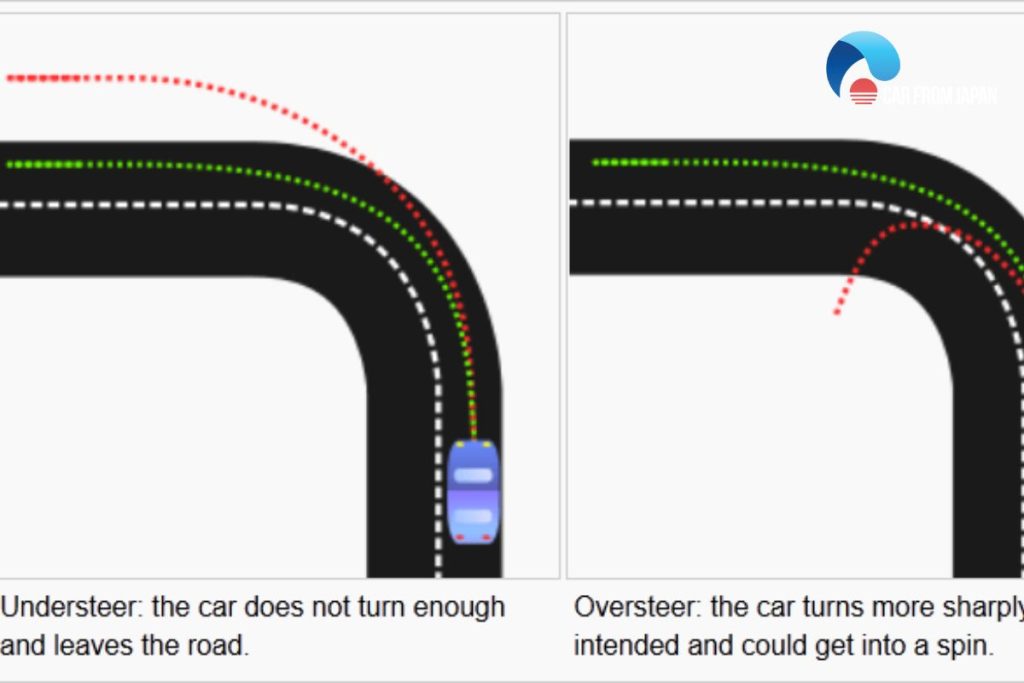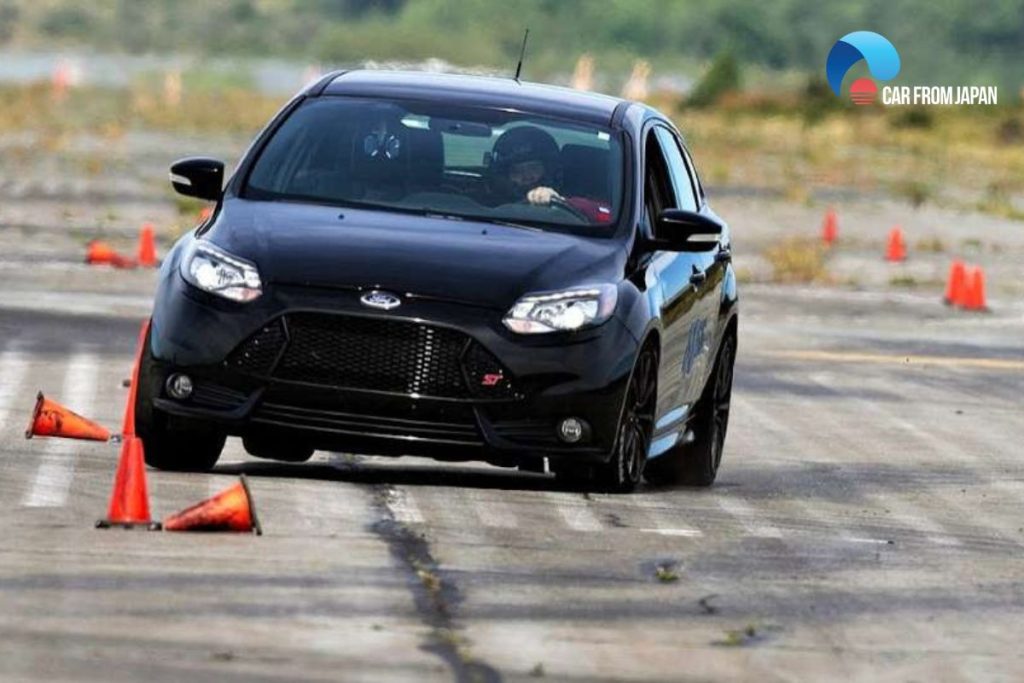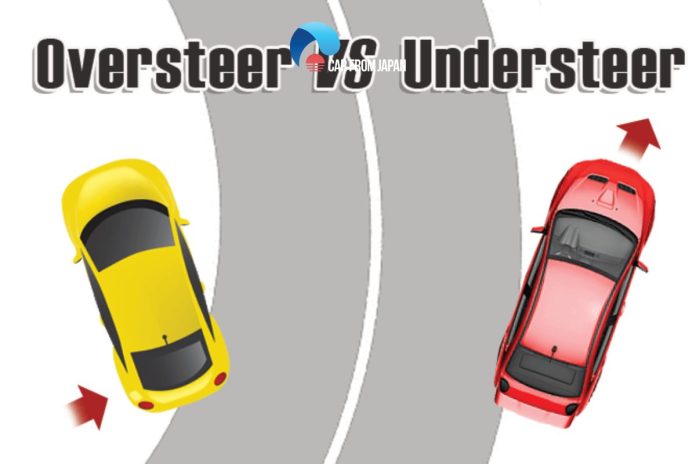Both understeer and oversteer are terms related to vehicle dynamics. They refer to the sensitivity of an automobile to its steering.
If you want to understand oversteer vs understeer differences, you should first know what actions these terms refer to.
Contents
- What are Understeer and Oversteer?
- Oversteer vs Understeer
- Difference Between Understeer and Oversteer
- FAQs on Oversteer vs Understeer
- Which is more dangerous, oversteer or understeer?
- Are certain types of vehicles more prone to oversteer or understeer?
- Can oversteer and understeer be beneficial in motorsport or performance driving?
- How can I prevent oversteer and understeer when driving?
- Can tire choice affect oversteer and understeer tendencies?
- FAQs on Oversteer vs Understeer
- Can the same car switch from understeer to oversteer just by tire pressure changes?
- Why do most modern cars from the factory understeer rather than oversteer?
- Does weight distribution affect oversteer vs. understeer more than drivetrain?
- Why do some drift cars deliberately set up suspension to increase oversteer?
- Why does lifting off the throttle mid-corner cause oversteer in some cars?
- How can tire wear create both oversteer and understeer in the same car?
- Conclusion
What are Understeer and Oversteer?
The simplest definition of understeer could be it occurs when a car steers (turns) less than what the driver commands.
Oversteer is the turning of the car more than what the driver commands. These actions depend on the changes in steering angle and lateral acceleration.
Oversteer vs Understeer
Whether a vehicle will oversteer or understeer mostly depends on whether it’s a front- or rear-wheel drive.
The first phenomenon is a characteristic of rear-wheel-drive vehicles while the second one occurs in case of front-wheel-drive cars.
However, both automobile types can experience both phenomena given the right conditions. These incidents generally happen when the car has a powerful engine.
For this reason, many newer models are equipped with an electronic stability control that kicks in when the vehicle starts to slide.
Watch this video from Car Throttle to have a detailed explanation of these terms!
Difference Between Understeer and Oversteer
To understand the oversteer vs understeer concept, check the table below. It will clear your confusion and help you to get a clear idea about these occurrences.
| UNDERSTEER | OVERSTEER |
| It means lack of grip. When this happens, the driver will have little response from the steering wheel. | – It happens when the front side of a vehicle has more grip than the back side. – It makes the car spin when driving into a corner. |
| It takes place when the vehicle’s front wheels begin to plow straight despite turning the steering wheel. | Oversteer is the result of the rear end of a car being fishtailed or sliding out. |
| – Front-wheel-drive cars are prone to this phenomenon because they send the engine power to the wheels that steer the car. – When the tires start, the driver does not feel any grip to steer. | – Rear-wheel-cars are susceptible to oversteer because here the rear end of the car has the control power. – When the rear end loses the grip, it overtakes the front and oversteer occurs. |
– You lift the weight distribution that takes the control off of the front tires and leads to understeer. – Also occur when you turn the wheels on your car too fast and too far. | – Oversteer is not something to be concerned over because it happens in everyday driving. – Dangerous if it occurs in snowy, muddy, or rainy conditions. |
| – Applying more suspension or increasing the front wing can minimize understeer. – Tire pressure adjustment also helps sometimes. | – Do the opposite to fix this problem. – Loosen the suspension or downforce to drop the grip. |

SEE MORE: Know the Details about the Car Dashboard Warning Light
FAQs on Oversteer vs Understeer
Which is more dangerous, oversteer or understeer?
Both oversteer and understeer can be dangerous, but the severity of the situation depends on the driver’s skill and the circumstances.
Oversteer can be more challenging to control, as it can lead to a spin if not managed properly.
Understeer may result in a wider turn or running off the road but is often considered easier to correct by easing off the throttle and steering into the turn.
Are certain types of vehicles more prone to oversteer or understeer?
The tendency toward oversteer or understeer can vary depending on the vehicle’s design and drivetrain.
Rear-wheel-drive sports cars are more prone to oversteer, while front-wheel-drive cars tend to exhibit understeer characteristics.
All-wheel-drive vehicles may have a more neutral balance but can still experience oversteer or understeer in certain situations.
Can oversteer and understeer be beneficial in motorsport or performance driving?
In motorsport and performance driving, controlled oversteer can be used for drifting or making a car rotate quickly in tight corners.
However, excessive oversteer or understeer can lead to loss of control and compromise lap times.
Skilled drivers use these characteristics to their advantage but always aim to maintain control.
How can I prevent oversteer and understeer when driving?
Preventing oversteer and understeer involves driving within your car’s limits, maintaining proper tire pressure, and avoiding abrupt steering or throttle inputs.
Choosing the right tires and adjusting your driving style to road and weather conditions can also help reduce the risk of these handling issues.
Can tire choice affect oversteer and understeer tendencies?
Yes, the type and condition of tires can significantly affect a car’s tendency towards oversteer or understeer.
Performance tires with good grip can enhance handling and reduce these characteristics, while worn or mismatched tires can exacerbate them.

FAQs on Oversteer vs Understeer
Can the same car switch from understeer to oversteer just by tire pressure changes?
Yes. Increasing rear tire pressure or lowering front tire pressure can shift grip balance and completely change the car’s cornering behavior.
Why do most modern cars from the factory understeer rather than oversteer?
Manufacturers tune cars for safety. Understeer is more predictable and easier to correct for average drivers, while oversteer can spin the car if handled poorly.
Does weight distribution affect oversteer vs. understeer more than drivetrain?
Weight distribution plays a huge role.
A rear-heavy car (like a Porsche 911) naturally tends toward oversteer, while front-heavy cars (like most FWD sedans) lean toward understeer.
Why do some drift cars deliberately set up suspension to increase oversteer?
Because oversteer allows controlled sliding. Drifters tune suspension, camber, and differential lock to make the rear break loose predictably and stay there.
Why does lifting off the throttle mid-corner cause oversteer in some cars?
That’s “lift-off oversteer.” Reducing throttle shifts weight forward, unloading the rear tires and making them lose grip, a common trait in FWD cars driven too hard.
How can tire wear create both oversteer and understeer in the same car?
Worn front tires promote understeer; worn rear tires promote oversteer.
Uneven tire rotation or replacement can completely change how the car behaves.
Conclusion
Understanding the differences between oversteer vs understeer is crucial for drivers to navigate turns safely and effectively.
Oversteer occurs when the rear wheels lose traction, causing the car to rotate more than desired, while understeer happens when the front wheels lose grip, leading to a wider turn than intended.
Both oversteer and understeer can be managed with the right skills and techniques, but they can also pose dangers if not corrected promptly!



